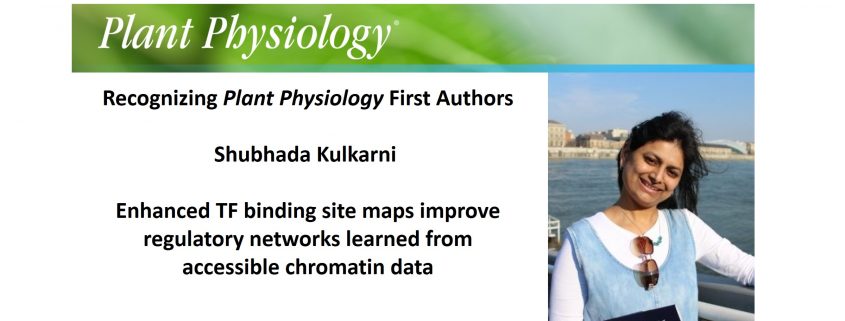Recognizing Plant Physiology first authors: Shubhada Kulkarni
Shubhada Kulkarni, first author of Enhanced TF binding site maps improve regulatory networks learned from accessible chromatin data
Current position: For the current month, I am not affiliated to any university. But formerly, I was a Doctoral researcher at Center for Plant Systems Biology, VIB-University of Ghent. From August, I will be working as a Postdoctoral Researcher at the Cancer Research Institute (DKFZ), Heidelberg, Germany.
Education: M.Tech. in Modeling and Simulation from University of Pune; PhD in Bioinformatics in the group of Prof. Dr. Klaas Vandepoele at Center for Plant Systems Biology, VIB-University of Ghent
Non-scientific Interests: Indian classical singing, cooking, and travelling
Brief-bio: One of the fascinating studied questions in biology is the one related to the transference of hereditary information in multicellular organisms using DNA and how a single cell has the potential to develop into different tissues, organs and systems. Transcriptional regulation is a complex and dynamic process that plays a vital role in achieving this during the developmental stages of plants. A key factor in this step is the regulation of genes in the plant at each stage with the help of Transcription factors (TFs). The research presented in the highlighted publication presents a detailed evaluation of different motif mapping tools being used in the plant science community to delineate gene regulatory networks (GRNs) in plants. With the protocol presented in this study, I believe that scientists exploring conditional dynamic chromatin behaviour will be benefitted and the new aspect of single-cell transcriptional regulation will be explored.




